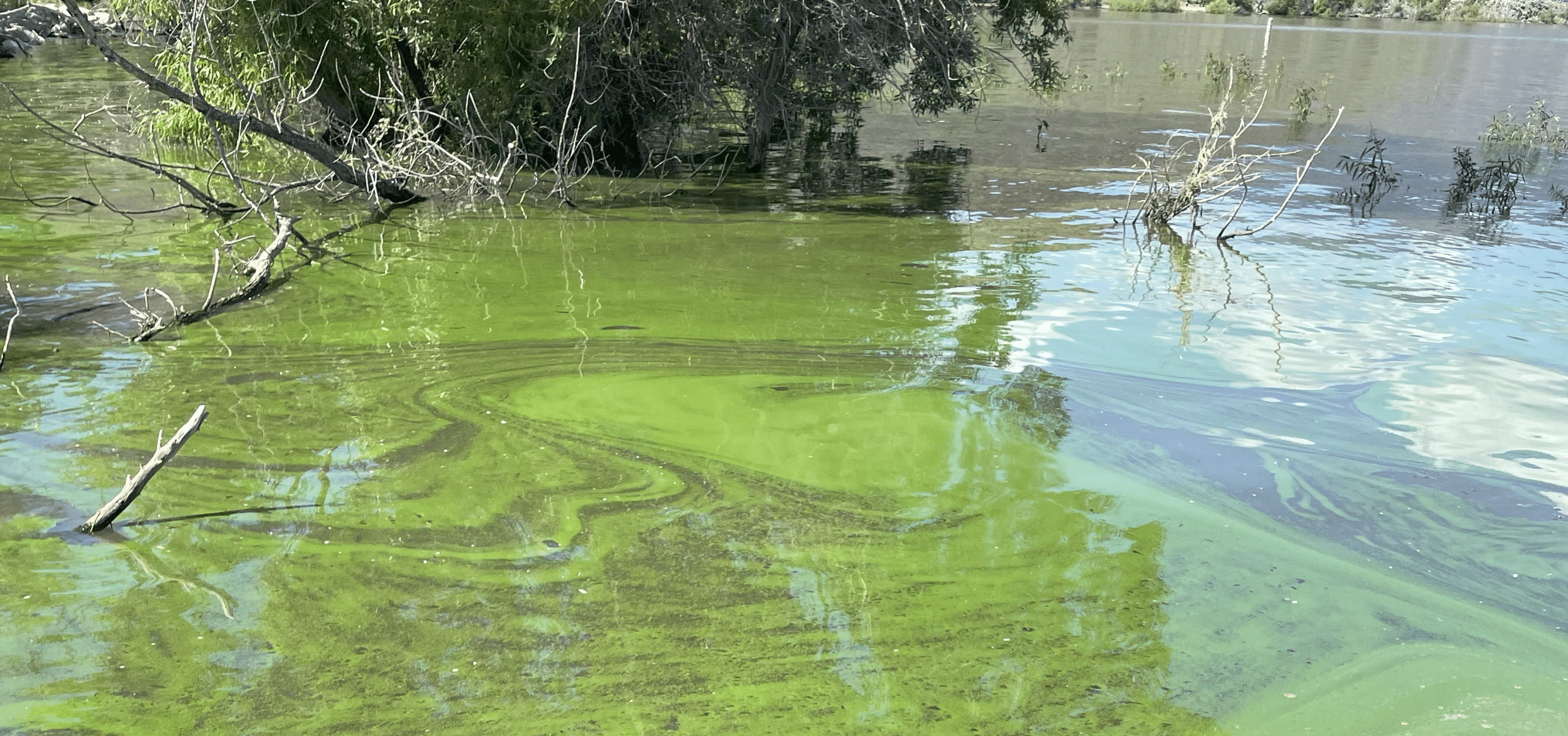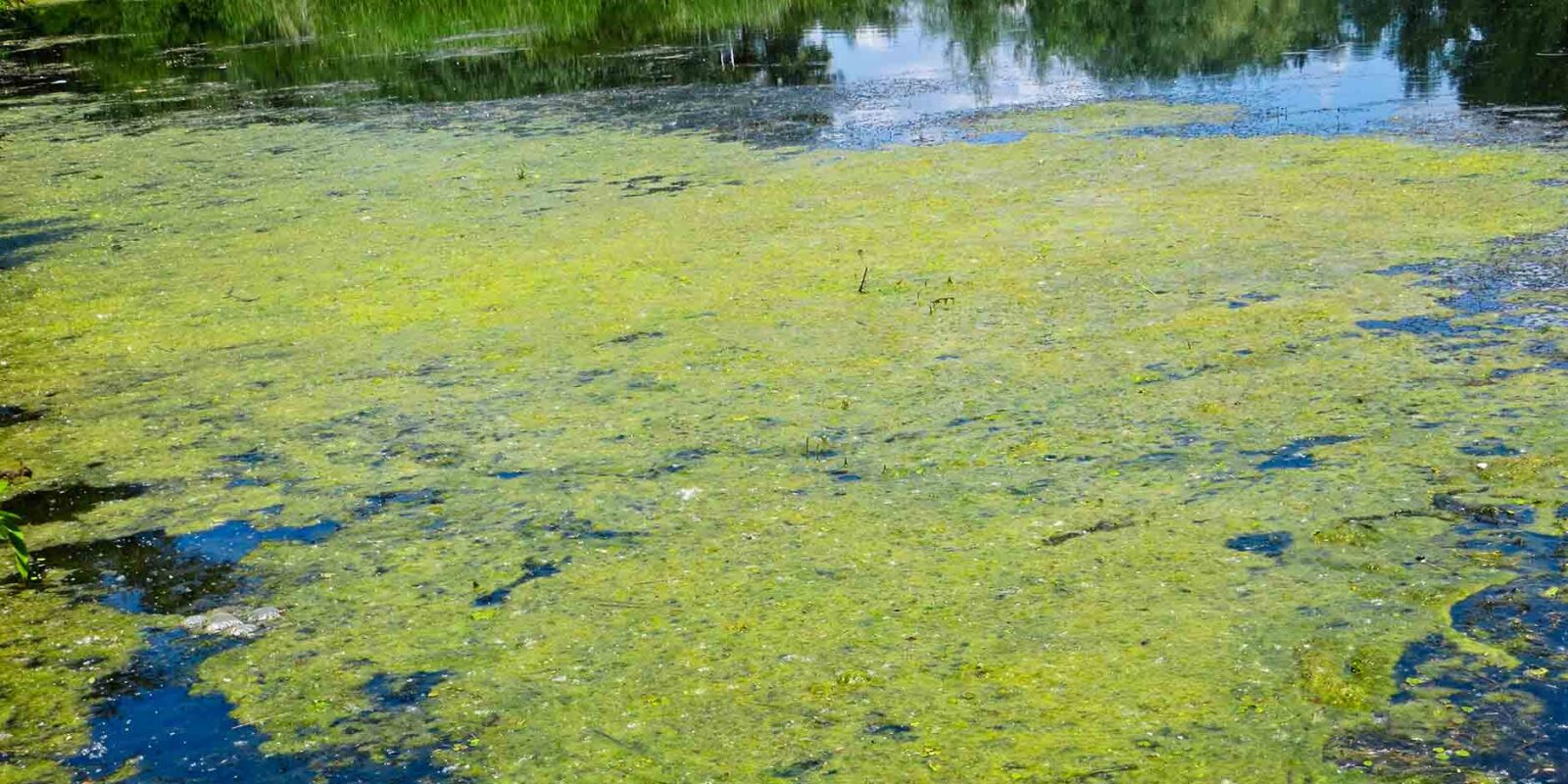In short
- High temperatures combined with stagnant water and nutrient overload usually results in excessive algae growth, leading to bloom formation.
- Algae blooms usually occur in freshwater or marine water bodies where sufficient light and nutrient concentrations support algae production.
- To prevent or restore an unbalanced ecosystem, it’s important to tackle algae-related issues caused by excessive nutrients and environmental conditions.
These so-called algal blooms deplete oxygen in water, release algal toxins, and cause bad taste and foul odors. Without treatment, algae continue to grow, receiving sunlight. This disrupts the natural balance of an ecosystem and affects the health of aquatic animals and plants.
How does algae grow?
Algae grow by photosynthesis. For this they need sunlight and nutrients, such as phosphorus and nitrogen. An overabundance of nutrients usually leads to excessive algal growth, which can have adverse effects on the ecosystem.
Algae are a diverse group of unicellular algae and multicellular photosynthetic microorganisms that appear in a wide range of environmental habitats. For example, including fresh water and marine water bodies. They are photoautotrophic cells containing chlorophyll, with simple reproductive structures and tissue not differentiated by roots, stems, or leaves. The term algae covers many algae species that produce oxygen through photosynthesis, contributing an estimated 50-80% of the oxygen we breathe. Besides producing oxygen, algae play an important role in aquatic ecosystems by forming the base of the food chain and providing algal biomass that serves as food for fish and other aquatic animals.

All natural waters contain basic levels of algae, which are essential for maintaining ecological balance in a water body. These algal concentrations belong to a normal lake ecology. However, many causes, including a combination of high concentrations of excessive nutrients such as nitrogen and phosphorus from fertilizers, warmer temperatures in summer and early fall, and sufficient light (including direct sunlight), encourage excessive algae growth. This leads to a build up of algal biomass and bloom formation. When algae species grow in excess, they form blooms that can disrupt the natural balance and contribute to harmful algal blooms (HABs). This poses risks to water quality and aquatic life.
When does algae growth cause problems?
When a specific algal type starts growing exponentially, it suffocates other aquatic organisms, which are essential for a balanced lake ecology. At the surface, light can’t penetrate the water column anymore, pH increases, plant growth is being reduced and inevitably, dissolved oxygen also decreases. A lake’s natural balance shifts even more when aerobic bacteria die, and anaerobic bacteria take over the nutrient digestion. This deteriorates water quality, eventually leading to massive fish- and other aquatic life die-offs. Intense algae production is even more common than you’d think.
Algal blooms usually appear in freshwater sources, especially in the summer. This also leads to thermal stratification, causing serious damage to the aquatic environment. They can easily be identified by the green coloration of the water, which comes from the high density of pigmented cells. Although several algal species can form blooms, cyanobacterial harmful algal blooms (CyanoHABs) are most potent in producing dangerous toxins. This can seriously harm humans, pets, aquatic plants, and fish.
Does ultrasound treat algal blooms?
To prevent or restore unbalanced ecosystems, it’s critical to control problems as they occur. When it comes to lakes or larger ponds, current treatment methods include aeration, mixing, and ultrasound. As an alternative to harsh chemicals, we’ve developed an ultrasonic, floating unit that effectively controls harmful algal blooms. Controlling algae pollutants with ultrasound is a well-established, eco-friendly, and cost-effective solution that is completely safe for humans, fish, and aquatic plants. This method helps to remove nutrients such as nitrogen and phosphorus from the water, reducing the growth rate of algae and limiting lipid accumulation in harmful algal species, including cyanobacteria. By targeting the algal culture in the water body, ultrasound treatment disrupts the life cycle of algae and decreases algal biomass, contributing to improved water quality and ecosystem health.

How does ultrasound control algae?
Blue-green algae contain gas vesicles. During the day, they travel up and down throughout the water column to obtain sunlight and nutrients. Our technologies emit ultrasonic waves in the top water layer, affecting their buoyancy regulation, fixing them in the water column. We use specific ultrasonic programs which adapt to changing water- and algal conditions.
Due to a lack of sunlight and nutrients, the algae will sink to the bottom where they eventually decompose. However, because a certain level of algae is normal and natural for a healthy ecosystem, the technology doesn’t completely eliminate them, but reduces them by up to 90%. This way, the ecosystem is restored and thriving. Algae levels gradually decrease as soon as ultrasonic treatment is applied. However, without any treatment, the blooms will recur each year.
